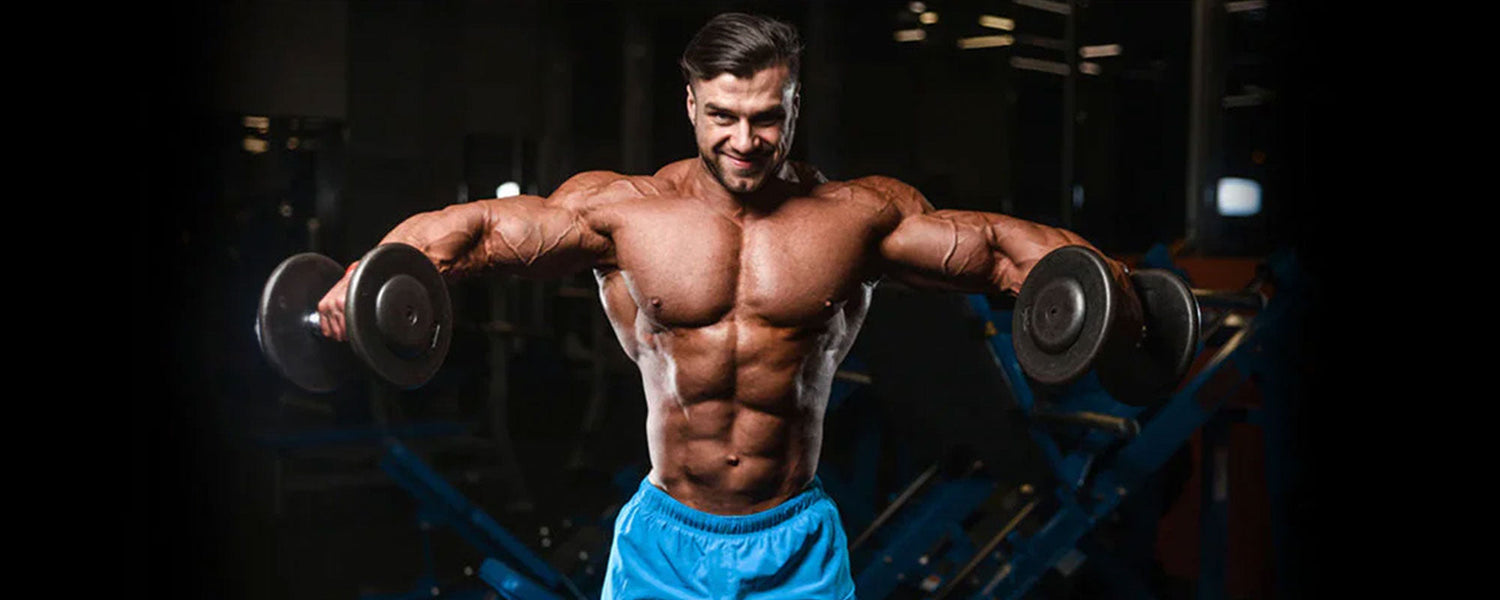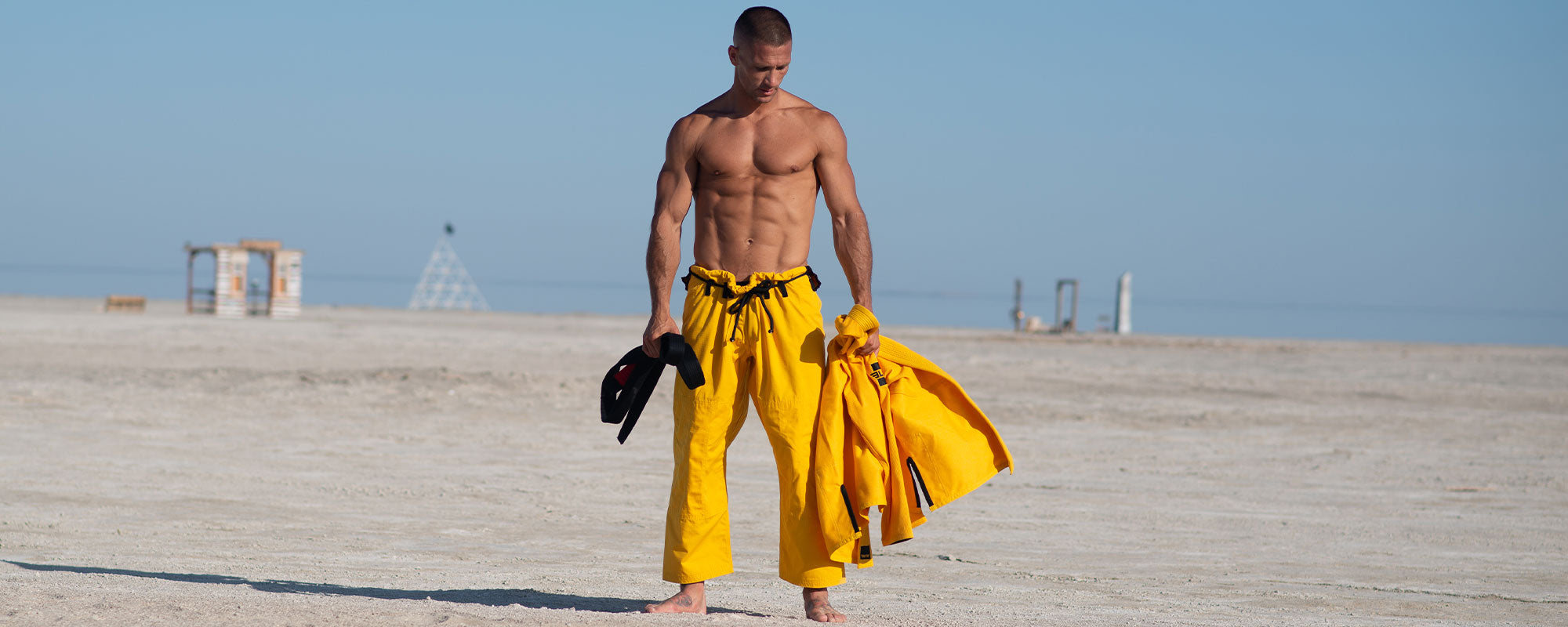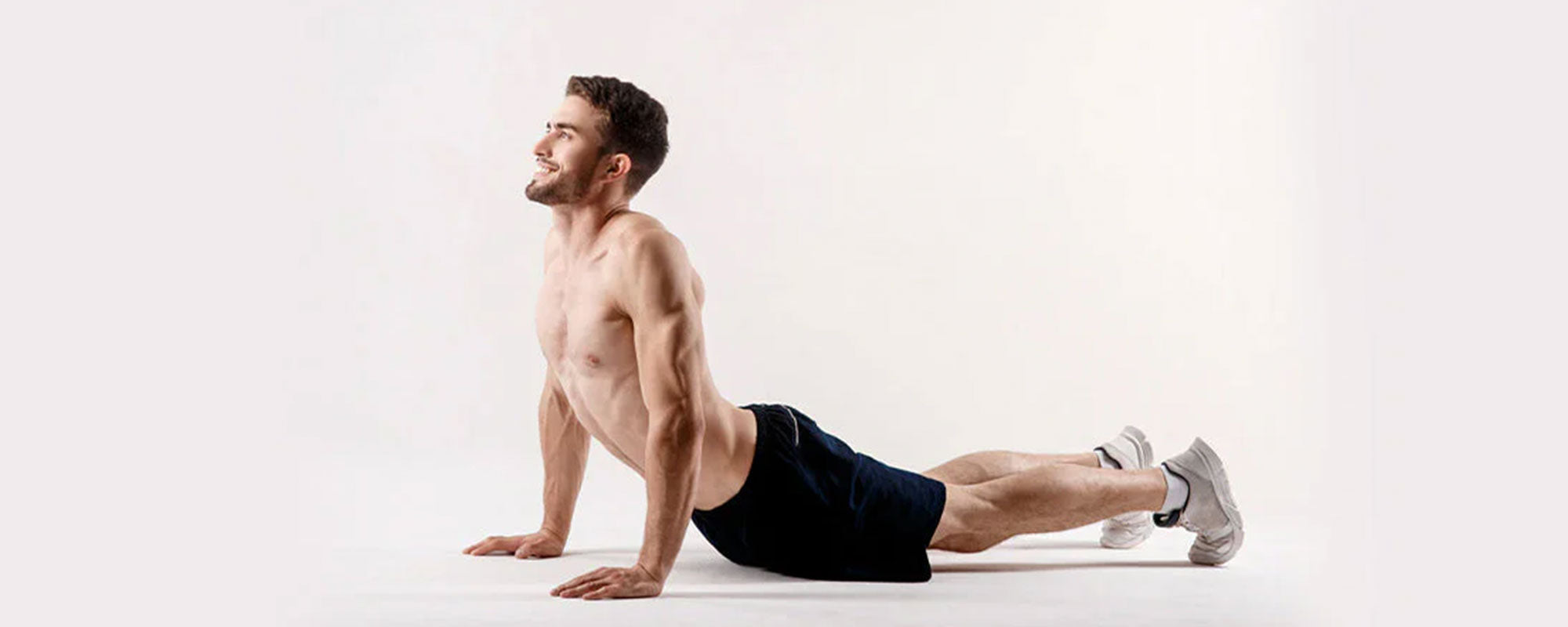Table of content
Shoulders are one of the most essential parts of the body that are used in every physical activity, whether it is about dealing with day-to-day tasks or participating in sports like martial arts. You need to have stronger shoulders not only to do your job efficiently but also to avoid possible injuries during the course of performing your tasks.
In particular, when you train for Brazilian Jiu-Jitsu, you need to have stronger arms and shoulders as they are involved in most of the techniques and movements that BJJ fighters perform during their training and fights. Being a BJJ athlete, you must know how you can strengthen your shoulder muscles, besides your leg and overall body muscles, to perform well and succeed in the sport. Here you will learn the top workouts to strengthen your shoulders and achieve your goals in BJJ.
1. Why Should BJJ Athletes Have Stronger Shoulders?
BJJ is one of the grappling sports that requires you to take your opponent down to the ground and make use of different submissive techniques like chokes, arm locks, and takedowns to force the opponent to tap out. To perform such techniques effectively and get the desired results, it is vital to have strong shoulders.
It has been seen that grapplers are more prone to shoulder injuries like joint dislocation and rotator cuff tears and should avoid them. However, they need to have well-toned shoulders with maximum flexibility and stability. Unpredictable shoulder movements can take place while controlling the opponent and can result in muscle damage if you do not have strong and stable shoulders.
Therefore, BJJ fighters should be incorporating shoulder stability and strength workouts into their training programs.
2. Can I Do Jiu-Jitsu with a Bad Shoulder?
It depends on the circumstances and factors like the nature of the injury and the time period your shoulder takes to heal. It is possible to train for jiu-jitsu with a bad shoulder. However, doing so makes you vulnerable to multiple risks, including severe injuries. It is vital to wait for a full recovery from the shoulder injury to stay safe. You should also consult with your physician before returning to the jiu-jitsu mat after getting an injury.
3. Keep Your Shoulders Healthy While Practicing BJJ
As we know, shoulder muscles are very much at risk while practicing BJJ and athletes should be taking measures to keep them safe from injuries to prolong their careers. For keeping your shoulders strong and healthy enough to stay active on the BJJ mats every time, you should be taking the following factors into consideration.
3.1. Do As Much Stretching As You Can
Stretching is one way to keep your body flexible and stable in grappling martial arts like BJJ. Shoulder muscles also need to be flexible to perform BJJ moves for the maximum time without getting injured.
Therefore, you should be doing stretching activities as much as you can to maximize the flexibility of your shoulder muscles to keep them healthy and safe from injuries while practicing BJJ.
3.2. Foam Roll
Doing foam roll exercises can also help you keep your shoulder healthy while training Brazilian jiu-jitsu. The foam roller is a great way to massage your shoulders, which helps in rapid recovery from shoulder injuries.
3.3. Strength Exercises
Shoulder strength is an important element in any sport to perform well. Specifically, in a grappling sport like Brazilian jiu-jitsu, you cannot make progress if your shoulders are not strong enough to execute different movements like armlocks, grips, and chokes. Going for these movements with weaker shoulders can end up with severe injuries like joint dislocation or rotator cuff tear. That is why, in order to keep your shoulders healthy and injury-free, you should prioritise shoulder strengthening exercises.
3.4. Scapular Mobility
To avoid injuries, you should be working on scapula mobility. The scapula is referred to as the shoulder blade, which has great importance in the overall functionality of the shoulders. Working on this area of the shoulder will not just improve the health of your shoulder joints but also improve your posture which is of great importance in BJJ to proceed in the sport.
4. Important Shoulder Muscles to Work
Though all of the shoulder muscles are used in performing most of the BJJ movements, the deltoids are of great importance to work on for strengthening the overall shoulders. There are three types of deltoid muscles that one should be working on to have stronger muscles.
- Anterior Delt
- Lateral Delt
- Posterior Delt
Your shoulder workouts should mainly focus on these muscles to maximize your gains and stay safe from injuries while practicing BJJ. There are different workouts for these shoulder muscles, and to maintain a balance between them, you should be distributing your shoulder workout time equally.
5. Top Shoulder Workout for BJJ Athletes
Deltoid muscles are responsible for the movement of the arm and need to be strengthened. In BJJ, you make most of the movements by moving your arms, which requires you to build strong muscles. To help you make your delts strong, here is a complete shoulder workout focused on these muscles.
You will start this workout with 3-minute warmup exercises like jumping rope, squats, and stretching.
After the warmup, you will be performing 3 sets of the following exercises considering your training level.
5.1. Smith Machine Overhead Press
The smith machine overhead press is an amazing exercise that can help you improve strength and muscle growth in the entire shoulder region. However, this exercise is more focused on the front and anterior deltoid muscles. Here is how you should be doing this exercise:
- Start by setting up the Smith machine and setting a bench on it while adjusting the back to 90 degrees.
- Sit down on the bench in a position where the bar can comfortably reach down to your face level.
- Add the desired weight to the bar.
- Lower the weighted bar to your chin level, pause, and then raise it back to the starting position.
- Repeat.
5.2. Front Raise
Front raises are also helpful for working on the delts. You can perform this exercise both with dumbbells and a cable. The dumbbell front raise is focused on all the delt muscles, while the cable can help with the posterior delts.
Front Raise with Dumbbells
Stand with a tall back while holding dumbbells in both hands while resting on your sides.
- Raising both dumbbells to your front by maintaining a stationary torso position with palms facing down, exhale while raising dumbbells.
- Lower the dumbbells to the starting position.
- Repeat.
Front Raise with Cable
Set up a cable machine by attaching grip handles to the low pulleys on it and adding the desired amount of weight.
- Stand with your face away from the cable machine and grip the handles with both your hands with palms facing down.
- Stand up with your holding handles in a pulling position to stack off the weight. This will be your starting position.
- Slowly raise your hand-held handles to shoulder height while maintaining a rigid body and straight arms.
- Pause there for a moment, and lower the weight to the initial position.
- While performing this exercise, do not let the stack drop the handles to touch your body.
- Repeat.
5.3. Dumbbell Upright Row
Another exceptional exercise to work on your shoulder muscles is the dumbbell upright row. Here are the steps to performing it appropriately to gain the maximum benefits.
- Start from a standing position by holding dumbbells in your hands and keeping your feet shoulder-width apart from each other.
- Inhale and pull the dumbbells upwards in front of your chest. Try to keep them close to your body.
- Lower the dumbbells slowly to the starting position.
- Repeat.
5.4. One-Arm Cable Front Raises
For the anterior deltoids, cable exercises can help with strength gain and muscle development. This is one of the best cable exercises for you. You can perform a one-arm cable front raise exercise in the perfect way in the following steps.
- Set up a cable machine by attaching the grip handle to the low pulley and adding the desired amount of weight.
- Stand with your face away from the cable machine and grip the handle with your left hand, palms facing down.
- Stand up with the holding handle in a pulling position to stack off the weight. This will be your starting position.
- Slowly raise your hand holding the handle to your shoulder height with a fixed body and straight arm.
- Pause there for a moment, and lower the weight to the initial position.
- While performing this exercise, do not let the stack drop the handle. It should not touch your body.
- Repeat.
5.5. Single-Arm Standing Cable Reverse Flye
Another useful exercise that you can do for strengthening your shoulders and deltoids is a single-arm standing cable reverse flye. You can perform this exercise in the steps listed below.
- Set up a shoulder-height cable pulley machine with an attached cable and stand on the side while keeping your feet shoulder-width apart.
- By keeping your elbows pointed high, pull the cable out to the side and bring it to the front of your body with your opposite hand.
- While doing so, your elbow position should be fixed.
- Return to the starting point for the next rep.
- Repeat.
5.6. Seated Lateral Raise
The final exercise of this shoulder workout is the seated dumbbell lateral raise, which is incredible when it comes to building muscles and increasing stability and strength. Here are steps to follow to do this exercise in the right way.
Start with a pair of dumbbells and a bench to finish this exercise. Sit straight while keeping your feet shoulder-width apart on the edge of the bench.
- Hold dumbbells in both hands while keeping them on their sides with palms facing inwards. Keep the dumbbells away from your body by at least 4 inches.
- Slowly raise the dumbbells to your shoulders by bending your arm slightly while keeping your body fixed and your eyes forward.
- Pause there for a moment, and lower the dumbbells slowly to get into the starting position.
- Repeat.
Combining all these exercises makes a perfect shoulder workout that can help you make the most of it for your shoulders to perform well in your Brazilian jiu-jitsu training and competitions. The following chart provides you with the complete line of action that you can follow as per your fitness level.
| Exercise | Equipment | Sets | Reps | Rest | ||
|---|---|---|---|---|---|---|
| Beginners | Intermediate | Advanced | ||||
| Smith Machine Overhead Press | Bench, Smith Machine | 3 | 6 | 10 | 15 | 1-min |
| Dumbbell/Cable Front Raise | Dumbbells | 3 | 8 | 12 | 15 | 1-min |
| Dumbbell Upright Row | Dumbbells | 3 | 8 | 10 | 12 | 1-min |
| One-Arm Machine Front Raise | One-Arm Machine | 3 | 8 | 10 | 12 | 1-min |
| Single-Arm Standing Cable Reverse Flye | Adjustable Cable Machine, D-Handle Attachment | 2 | 10 | 12 | 15 | 1-min |
| Seated Lateral Raise | Bench, Dumbbells | 2 | 8 | 12 | 15 | 1-min |
6. Takeaway
Being a BJJ athlete you need to have stronger shoulders and arms to execute grappling techniques and movements in the best possible ways to turn the tables in your favor while competing on the mats. The described workout is a comprehensive one that will not just strengthen your shoulders but will also condition multiple other muscles of your body.
Photo Credit: veradosport












Leave a comment
This site is protected by hCaptcha and the hCaptcha Privacy Policy and Terms of Service apply.